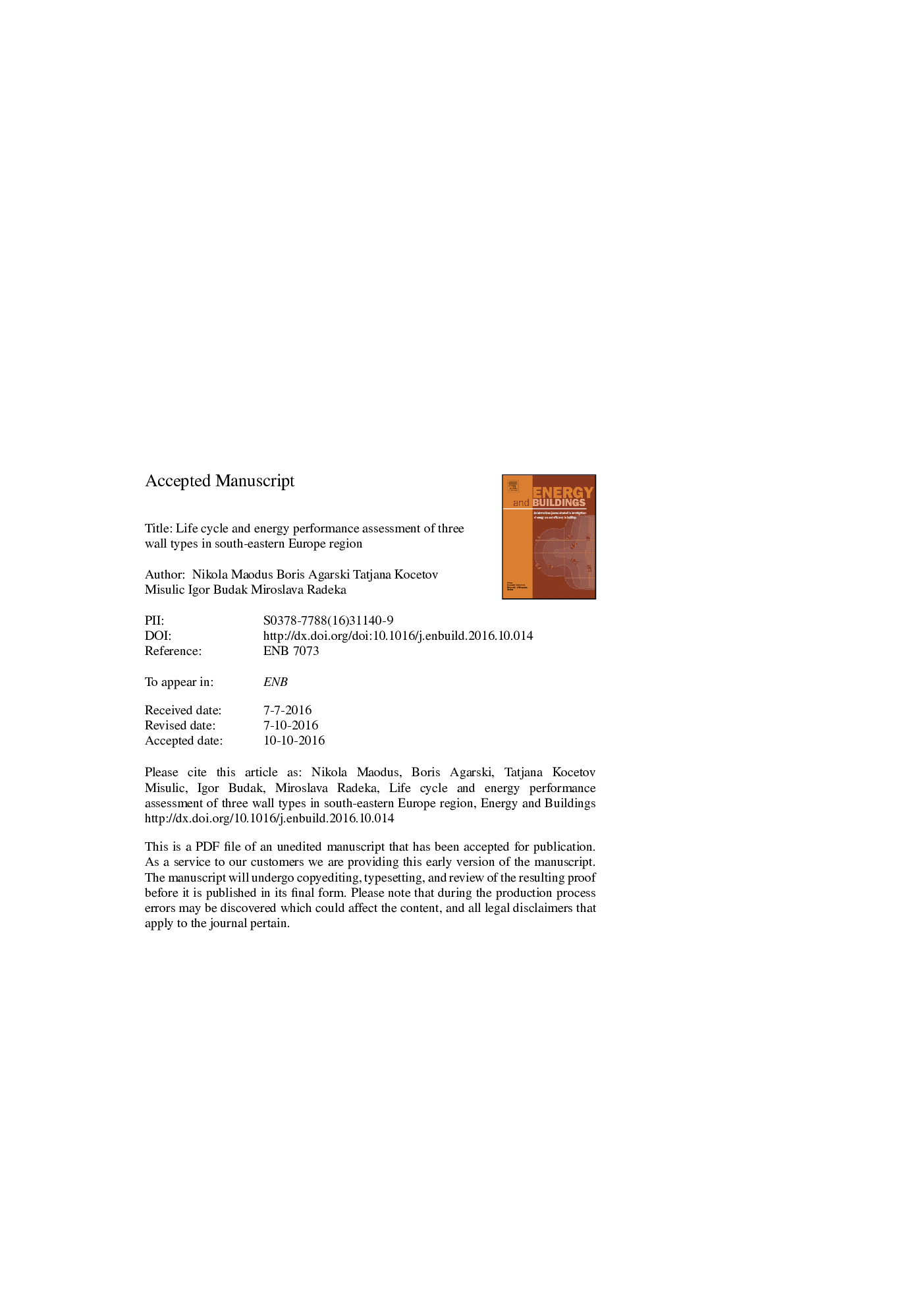| Article ID | Journal | Published Year | Pages | File Type |
|---|---|---|---|---|
| 4919540 | Energy and Buildings | 2016 | 28 Pages |
Abstract
Energy-efficient buildings, made of ecologically acceptable materials, are result of a worldwide ecological awareness induced by ever growing concern in regard to climate changes and economic aspects of long term energy savings. Complexities regarding energy-efficiency, economy and traditional construction of residential family homes led to acceptance of new building materials and forming of several typical wall types in south-eastern European region. This paper offers an energy performance analysis and a life cycle assessment of three common outer wall types: prefabricated timber-frame, an aerated autoclaved concrete and a solid brick wall with two model heating regimes. In order to verify energy and environmental performance of each wall type in a complete building, a detached house model was determined with the same parameters used for comparison. Model performances were determined for the selected life cycle stages and system boundaries during an eighty year period taken as a service life of family houses and compared to conventional and passive houses performances found in literature. Analysis results show that the model with aerated autoclaved concrete wall has the best environmental performance and that model with masonry brick walls has the best thermal performance in discontinuous heating mode of the three analysed walls.
Related Topics
Physical Sciences and Engineering
Energy
Renewable Energy, Sustainability and the Environment
Authors
Nikola MaoduÅ¡, Boris Agarski, Tatjana KoÄetov MiÅ¡uliÄ, Igor Budak, Miroslava Radeka,
